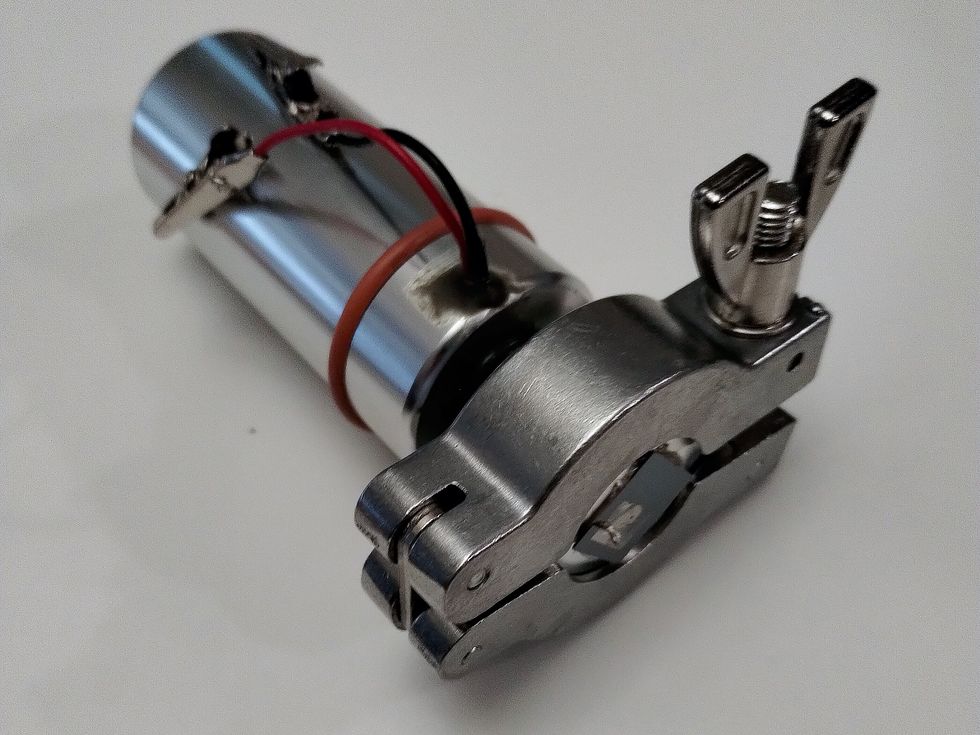Science
Startup Orbital Arc Develops Innovative Satellite Thruster

A new startup named Orbital Arc is proposing a revolutionary spacecraft thruster that could enhance power efficiency by up to 40 percent compared to current technologies. This innovative thruster utilizes naphthalene as fuel, which is significantly cheaper and lighter than traditional options. The company aims to provide a solution for satellite operators and mission planners seeking efficient propulsion systems for both low-Earth orbit satellites and interplanetary missions.
The founder of Orbital Arc, Jonathan Huffman, envisions a dramatic shift in thruster design. He explains, “We can go from a thruster that’s about a few inches across and several kilograms to a thruster on a chip that’s about an inch across and has the same thrust output, but weighs about an eighth as much.” This advancement could lead to substantial cost savings for satellite operators navigating space debris or conducting ambitious missions to distant planets.
Designing a New Propulsion System
Thrusters typically function by generating and expelling plasma to propel a spacecraft in the opposite direction. Conventional Hall thrusters utilize a magnetic field to trap electrons, ionizing a noble gas like xenon into plasma, which is then ejected to create thrust. Orbital Arc’s approach diverges significantly. Huffman, initially a biotech consultant and self-proclaimed “sci-fi nerd,” stumbled upon the idea while designing futuristic technology for a video game. His research into propulsion systems unveiled limitations in existing ion thrusters, particularly the inefficiencies that arise when increased thrust requires additional thruster mass.
Huffman’s background in biology provided unexpected insights into propulsion design. He drew inspiration from nanoscale tips used in mass spectrometers for biomedical applications. These tips generate electromagnetic fields that can be miniaturized for ionization processes in thrusters. After extensive development, Huffman confirmed the viability of his concept for a compact thruster, which has since progressed to testing prototypes.
Each thruster prototype features a chip embedded with millions of positively charged micrometer-scale tips, directing gas flow. Naphthalene, a byproduct of oil refineries, enters the system and interacts with the charged tips, becoming polarized. The charged tips trap the naphthalene, allowing electrons to be released, resulting in ions that accelerate and are expelled to produce thrust. This design avoids the energy losses associated with traditional plasma generation, leading to claimed efficiencies of 30 to 40 percent compared to conventional methods.
In a recent demonstration, just six of Orbital Arc’s tips generated about three times more ion current than an array of 320,000 tips developed by researchers at MIT. These results suggest significant potential for the new thruster technology.
Challenges and Future Developments
Currently in the prototype phase, each of Orbital Arc’s chips consists of only six tips, fabricated using microelectromechanical systems (MEMS) processes at Oak Ridge National Laboratory. Huffman expressed plans to scale the design, stating, “The next step is to manufacture a full-scale version of the chip in a university lab.” Following this, the team will need to construct the surrounding thruster, which Huffman describes as a straightforward assembly of valves and structural components.
Once assembled, the thruster will undergo rigorous testing, including vibration and radiation assessments, as part of the flight qualification process. Huffman anticipates that within two years, his team could deliver a market-ready product. Initial customers are expected to be small teams, including startups and research groups, willing to adopt innovative technologies despite the inherent risks.
Yet skepticism remains about the adoption of this new thruster technology. Jonathan MacArthur, a postdoctoral researcher at Princeton University, emphasizes the importance of data supporting performance claims, noting that potential customers may hesitate to invest in unproven systems. On the other hand, some analysts, like Oliver Jia-Richards from the University of Michigan, suggest that the excitement surrounding recent successful electric propulsion technologies from other startups may encourage early adopters.
Huffman envisions his thruster as a stepping stone to developing ultra-light spacecraft capable of ambitious missions. He believes that reducing dry mass in spacecraft will yield exponential benefits in performance, allowing for more complex missions without the need for refueling. “By integrating Orbital Arc’s thrusters, you can cut down on the mass of solar panels and fuel tanks, enabling two-way human-rated missions to destinations like Jupiter,” he claims.
As Orbital Arc progresses in its quest to innovate satellite propulsion, it stands at the intersection of advanced research and practical application, with the potential to reshape the future of space exploration.
-

 World3 weeks ago
World3 weeks agoGlobal Air Forces Ranked by Annual Defense Budgets in 2025
-

 World4 weeks ago
World4 weeks agoMass Production of F-35 Fighter Jet Drives Down Costs
-

 Science3 weeks ago
Science3 weeks agoTime Crystals Revolutionize Quantum Computing Potential
-

 World3 weeks ago
World3 weeks agoElectrification Challenges Demand Advanced Multiphysics Modeling
-

 Top Stories3 weeks ago
Top Stories3 weeks agoNew ‘Star Trek: Voyager’ Game Demo Released, Players Test Limits
-

 Business3 weeks ago
Business3 weeks agoGold Investment Surge: Top Mutual Funds and ETF Alternatives
-

 Top Stories3 weeks ago
Top Stories3 weeks agoDirecTV to Launch AI-Driven Ads with User Likenesses in 2026
-

 Lifestyle3 weeks ago
Lifestyle3 weeks agoDiscover Reese Witherspoon’s Chic Dining Room Style for Under $25
-

 Entertainment3 weeks ago
Entertainment3 weeks agoFreeport Art Gallery Transforms Waste into Creative Masterpieces
-

 Health3 weeks ago
Health3 weeks agoGavin Newsom Critiques Trump’s Health and National Guard Plans
-

 Business3 weeks ago
Business3 weeks agoUS Government Denies Coal Lease Bid, Impacting Industry Revival Efforts
-

 Lifestyle3 weeks ago
Lifestyle3 weeks agoLia Thomas Honored with ‘Voice of Inspiration’ Award at Dodgers Event









